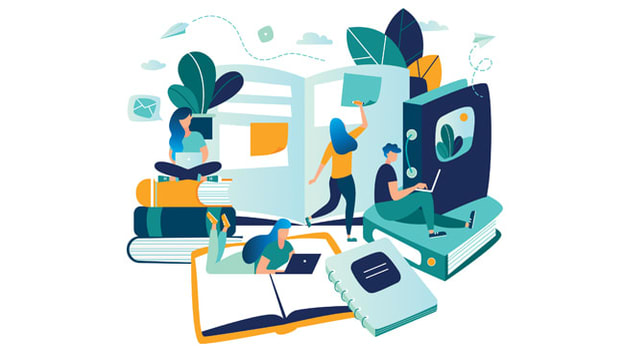How can organizations reimagine learning?

The era of abundance:
It is a very interesting era that we are living in, as far as learning and development is concerned, an era of abundance. For anyone who wants to learn, content is available in abundance. Changes are happening at an unimaginable pace, but learning is equally fast. With so much of content available in abundance, how would the organizations reimagine learning?
The answer is straightforward and simple:
- When one is not too keen to learn, ways to attract them towards continuous learning by building an eco-system around learning
- When one is confused about what to learn, provide guidance on what to learn with a clear logic
- When one is keen to learn, provide variety to choose from, a great learner experience and good quality content
- When one is keen to learn with no time to learn, integrate “on the job” learning to formal learning and build capsules that could fulfil the formal learning needs through short & sweet solution centric learning
- When one is overwhelmed with learning offerings, provide an option to streamline and prioritize learning
- When one is leaving an organization, enable continuation of learning through portable education schemes with a larger purpose in mind
Future of Learning
While the answer is straight forward and simple, the ways to implement it may not be as straightforward and simple. However, breaking it into chewable parts can help organizations to reimagine learning in an effective manner to inculcate the culture of continuous learning.
The reimagination can happen keeping in mind all the 4 components of Learning:
1. Learner
2. Tutor
3. Content
4. Environment.
In different industries, the requirements and current status may be different and reimagination could be done based on the where they are right now and aspiration for the future.
Learner preferences are moving from self-learning to group learning to community learning.
It has become lot easier for learners to learn by their self than ever before. Infact, with the pandemic, this culture is implanted right from young age as digital learning is introduced in schools and colleges across the globe. Organizations focusing on providing variety for learners to learn and practice at the same time would be in a better position to enable continuous learning. Apart from self-learning, group learning where focused competency building can be done and community learning through social collaboration could also build a learning culture in organizations. The role of L&D teams would be more of an enabler and facilitator in these forms of group and community learning.
Expert Practitioners as Tutors:
Tutors are learners themselves and in organizations, they are expert practitioners. Crowdsourcing content from practitioners would be the best way to enable learning for those keen to build expertise in areas that are in demand. More features to support tutor sharing will enable capturing tacit knowledge and spread the culture of sharing in organizations. Many technology firms are offering communication services which include features that enable sharing by experts that can be done very easily. MS Streams offers self-recording feature that is user friendly and makes it easier for anyone to share their expertise.
Solution Centric Content:
Content in forms of nano videos, podcasts are in abundance on the web. Organizations have been smartly moving from just content creation to mixing up creation and curation from various sources. But there are even more expectations to the pointed needs of learners. Now and in future, learners would want answers for their questions, which is basically personalized learning, in other words Solution centric learning. A format could emerge where Q&A becomes a key learning methodology. Just like FAQs for newly introduced processes, FAQs through videos, podcasts and interviews could become a very powerful and liked methodology of learning.
User friendly Environment:
Environment is now mostly digital. Physical classrooms are more a luxury than anything else. Imagine a situation when we all awestruck with the introduction of landline phone in our homes. Then, with introduction of cordless phones, we felt that landline was not friendly anymore because it restricted movement. Mobile phones increased mobility and user comfort. With Bluetooth and hands free, the comfort increased and with wearables now, even carrying a phone instrument is unnecessary and an additional burden. Making platforms easily accessible and simple to use would be the best way to attract learners. Startups today have made it better than ever before. Organizations must make the best use of it by acquiring or building an environment that can be best suited for their employees. Building an eco-system around this by linking learning to careers and many other rewards would enable continuous learning a culture in the organization.
Collaboration is the way forward:
- It is not too far where organizations come together for learning and sharing formally. There are already common programmes that have been initiated by partner organizations to develop leaders.
- Organizations that offer higher education as a scheme for employees might together work out portable education schemes that can be used by employees. Even when an employee leaves an organization, they would have an opportunity to continue their education with their new organization who has partnership with the same University that offers the courses.
- University partnerships with organizations would be on the rise and more and more solution centric courses with lesser duration would be introduced to benefit working professionals to build on their educational qualification with reputed Universities.
More and more creative and exciting collaborative learning opportunities would emerge making continuous learning and sharing a culture for all age groups across the globe. This would indeed be a great opportunity for all learning and development professionals to continuously reimagine learning.















